Since time immemorial, snakes have been the enemy of man. Whether it was the treacherous serpent of Eden, or the venomous asp, snakes have struck fear wherever they have slithered for thousands of years. That’s impressive for something without any arms or legs. In truth, snakes are remarkable creatures, and here in the United States we’re blessed (or cursed?) with hundreds of different species of the limbless reptile, some more dangerous than others. While certain snakes are completely harmless, others are jaw-droppingly deadly. Do you know the deadliest snake that lives in your state? It’s time to find out… and watch out for Montana.
Texas – Western diamond-backed Rattlesnake
The Western Diamond-backed Rattlesnake, a prevalent snake species in Texas, is the primary cause of snake bites in the state. Hiding in crevices and generally keeping themselves to themselves, the snakes only tend to bite humans if they have been disturbed.

This species is known for its aggressive nature and potent venom. This nasty stuff targets the circulatory system and frequently triggers muscle catabolism, involving the breakdown of specific muscle proteins. Don’t mess with Texas? That also means, don’t mess with a diamond-back.
North Carolina – Copperhead
North Carolina’s deadliest snake, the Copperhead, is instantly recognizable thanks to its distinctive copper-colored head and pit viper characteristics. While venomous, its bite is rarely fatal to humans – these days, at least – thanks to modern developments in anti-venom medicines.
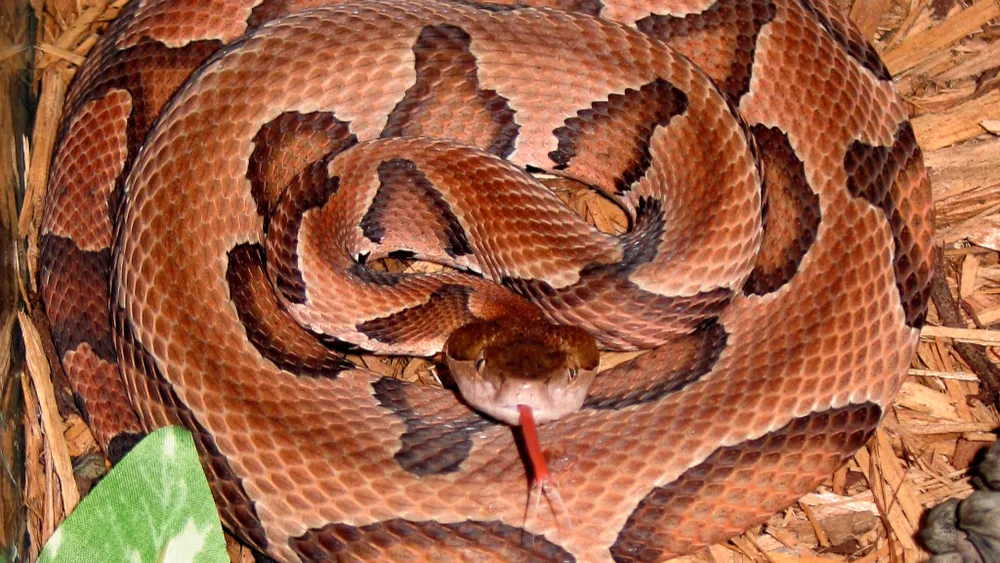
Copperheads are often encountered in wooded areas and are generally reclusive, preferring to avoid human interaction. It is only when humans encroach on a Copperhead’s habitat, such as when urban redevelopment occurs, that you begin to see bite numbers rise.
Georgia – Eastern diamond-back rattlesnake
The Eastern diamond-back rattlesnake holds the title of being Georgia’s most dangerous snake. It ranks as North America’s largest and most venomous snake, with its striking diamond-shaped patterns. The trick to knowing if a diamondback is near is that if you hear the rattle, you’re already too close.
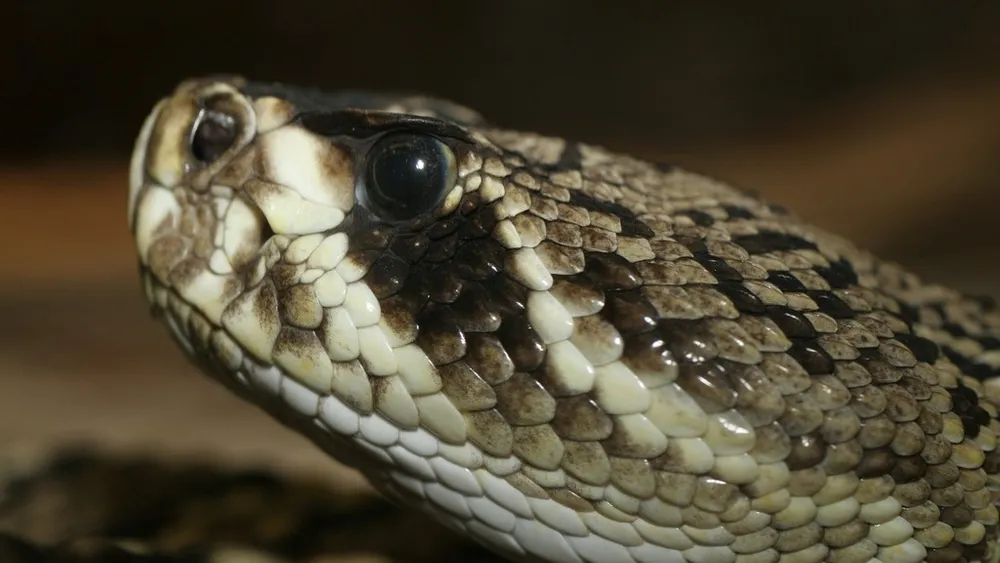
These deadly reptiles predominantly inhabit pine forests, swamps, and coastal regions, where they tend to blend into their natural surroundings. Though their potent venom poses a significant threat to humans, they are generally non-aggressive and will only strike when they feel threatened.
Arkansas – Cottonmouth
The Cottonmouth, also referred to as the Water Moccasin, claims the title of Arkansas’s most deadly snake. Known to use waterways to move around, Cottonmouths are as silent as they are deadly. This venomous reptile is prevalent throughout the state.
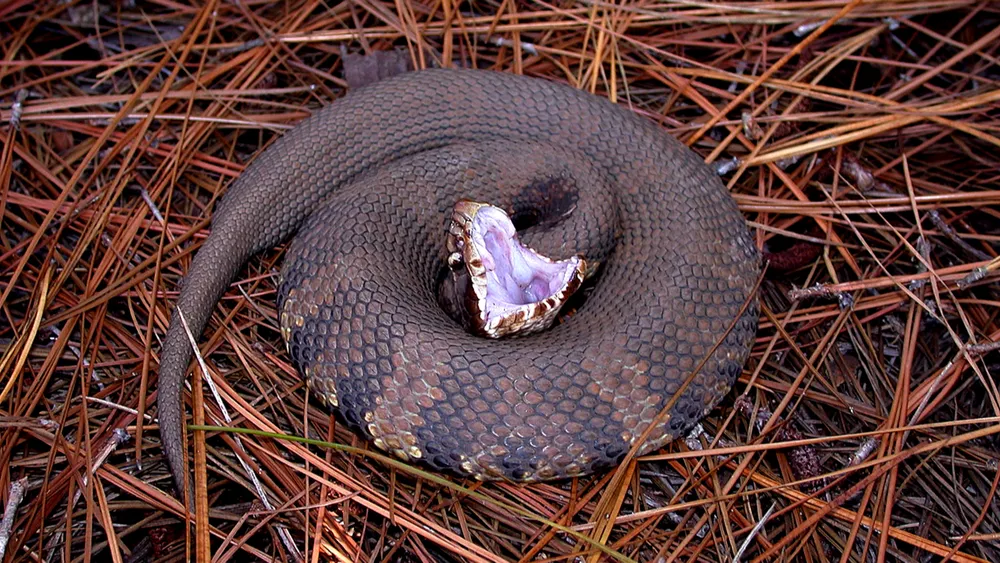
Cottonmouths have a distinctive appearance characterized by its dark-colored body and (as the name suggests) a white interior of its mouth, which it displays when feeling threatened. Found in a variety of aquatic habitats, the Cottonmouth is known for its potent venom.
Missouri – Timber rattlesnake
Missouri’s most perilous snake is the Timber Rattlesnake, known for its potent venom. This species is the most widely distributed rattlesnake in the state. However, due to its preference for rugged terrain and reclusive nature, encounters between humans and Timber rattlesnakes are infrequent.
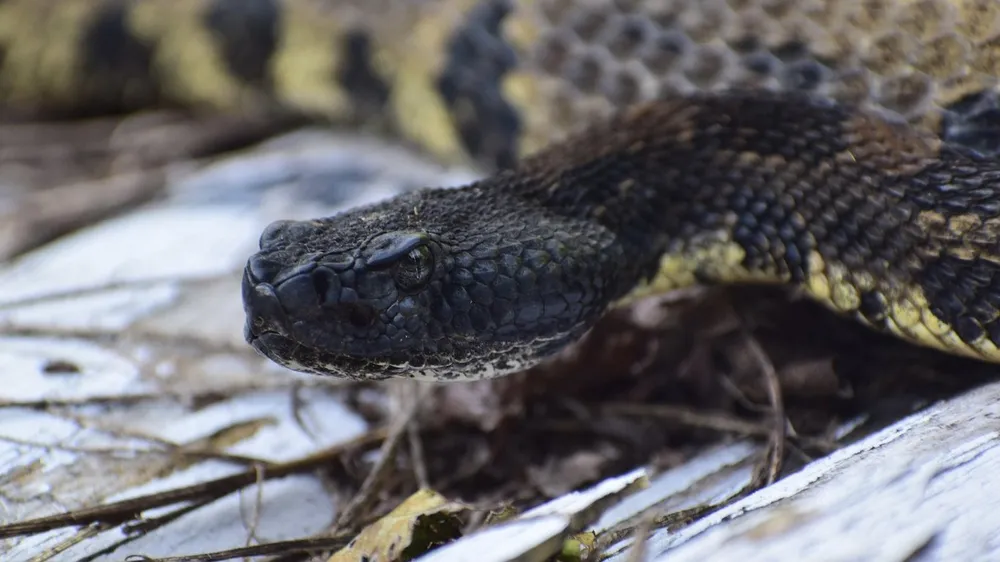
While the Timber Rattlesnake is a very dangerous snake, it generally avoids confrontations with humans. The species also plays a very important role in the ecosystem of Missouri, as it can help to keep the local rodent population under control.
California – Northern pacific rattlesnake
California’s most dangerous serpent is the Northern Pacific Rattlesnake. Usually around 36 inches in length, this venomous snake is renowned for its deadly bite and is most often seen by people who hike or travel through the lush Californian countryside.

Credit: Connor Long via Wikipedia Commons
The Northern Pacific Rattlesnake thrives in diverse Californian landscapes, though it typically shies away from human presence when inhabiting remote areas. Similar to other snakes, encounters usually always occur when people enter their habitat rather than the other way around.
Hawaii – Brown tree snake
Yes, while the slippery serpents might not be native to the state, Hawaii does have snakes. The most menacing snake one might encounter in Hawaii is the brown tree snake. A non-venomous snake, the Brown tree snake would only attack if seriously provoked.

The Hawaii Department of Wildlife deliberately introduced sterile male snakes from this species to aid in training detection dogs. In Guam, these snakes wreaked havoc on endangered bird populations. It is still illegal to own a pet snake anywhere in Hawaii.
Colorado – Prairie rattlesnake
Colorado is home to the imposing Prairie Rattlesnake, the state’s largest and most menacing snake. Recognizable by its triangular head with heat-sensing pits and tan or grayish-brown coloration adorned with dark brown blotches, it can reach lengths of up to five feet.
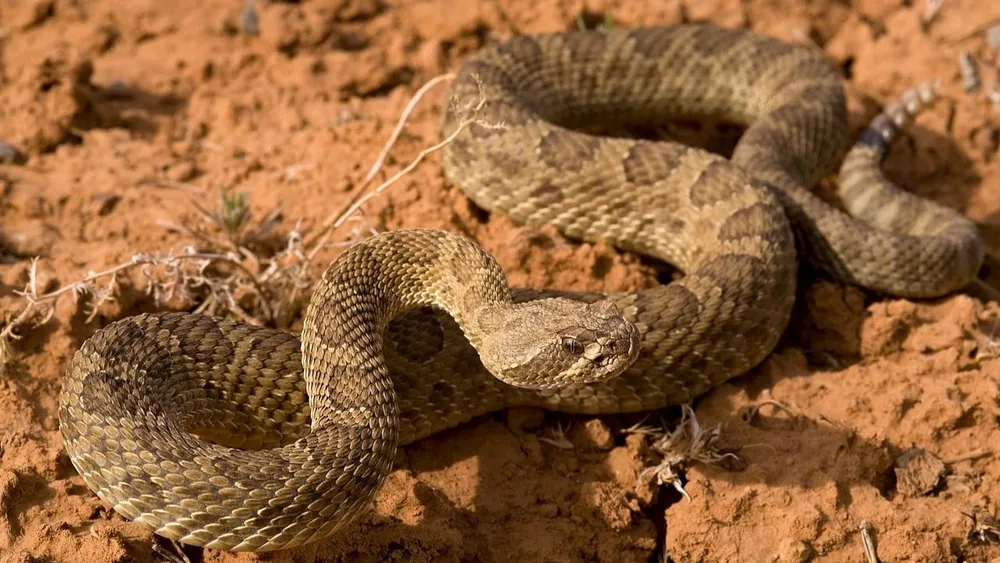
Thriving in a diverse range of environments, from plains grassland to piñon-juniper woodlands, this venomous species can be found throughout Colorado. The smaller size of this killer actually makes it more dangerous to those unfortunate enough to step on it, given its immense speed and accuracy of its bite.
Maine – Northern Water Snake
The tiny state of Maine actually has seven recognized snake species that call it home. Luckily for those that live there, Maine is home to a snake population entirely free of venomous species, and this includes the Northern Water Snake.
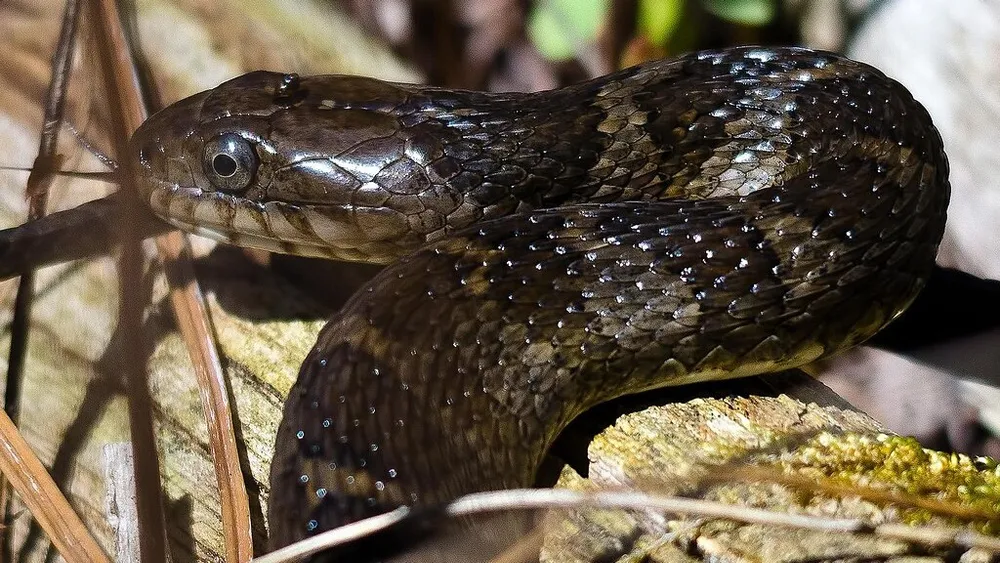
However, the Northern Water Snake, while non-venomous, stands out for its pronounced aggressiveness and readiness to strike if it feels threatened or provoked. While a bite won’t kill you, it will certainly leave a mark and you will need medical attention afterwards.
Nevada – Sidewinder
Nevada’s most menacing snake is the sidewinder, a species known for its potent venom and distinctive locomotion. Often growing up to three feet in length, sidewinders are adapted to desert environments, utilizing a unique sidewinding movement to traverse the hot sands.
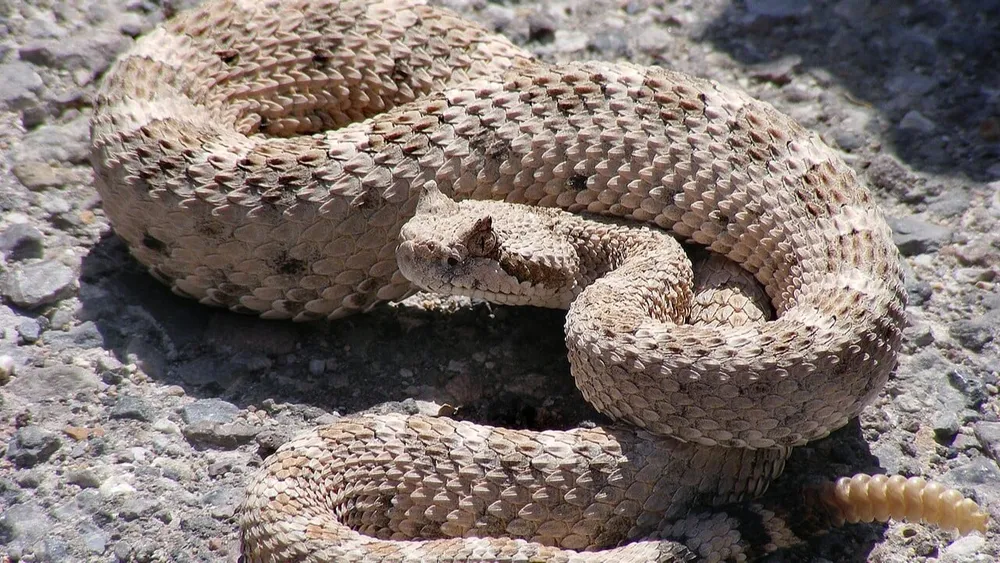
Their venom is primarily used for subduing prey, and while they are venomous, they are generally less dangerous to humans due to their smaller size and limited range. A Sidewinder would typically slither away rather than confront anyone out in the wild.
Alaska – Common garter snake
Surprisingly, even the cold Northern state of Alaska is not free from snakes! But rest assured, Alaska’s snakes are not deadly. Recent sightings have strongly indicated the presence of common garter snakes in the state, acknowledged by the Alaskan Herpetological Society.

Still, while these snakes were previously thought to be entirely harmless, it’s now believed they may possess a mild toxin, which, once again, poses no lethal threat to humans. Even if you have moved to Alaska to escape the slithering viper, encountering one in the great expanse of the Alaskan wilderness is still extremely rare.
Ohio – Northern Copperhead
In Ohio, the Northern Copperhead takes the spotlight as the state’s most hazardous snake. These venomous pit vipers, which can reach as much as three feet in length, primarily inhabit the eastern part of the state, residing exclusively on the Atlantic side of the Continental Divide.
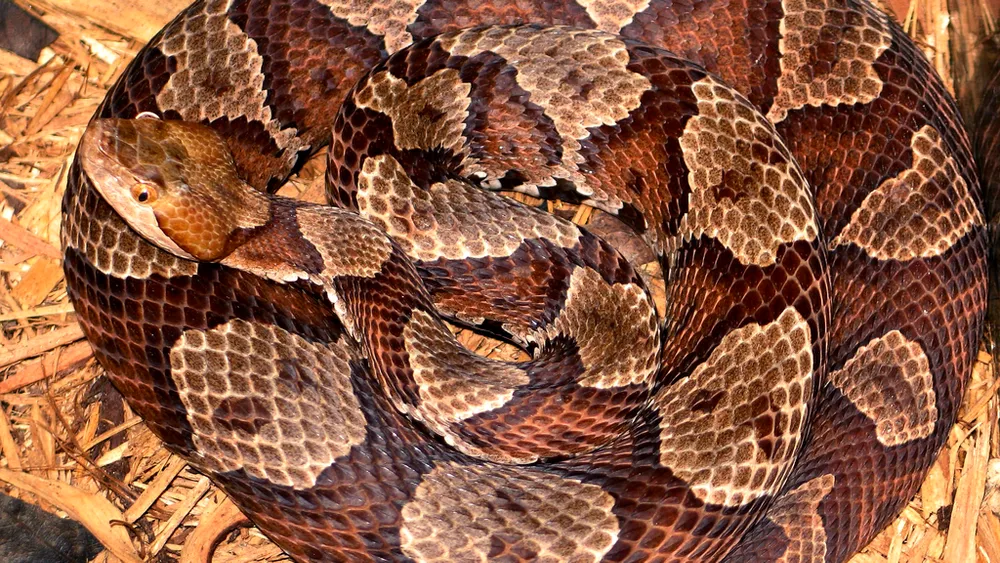
Despite their relatively modest size, their venom can cause severe complications if bitten, emphasizing their potential danger. While not inherently aggressive, northern copperheads play a significant role in the annual count of approximately 8,000 snakebites in the United States, warranting awareness, respect and fear.
New York – Timber rattlesnake
With a length ranging from 3 to 4 feet, and sometimes even longer, the timber rattlesnake holds the distinction of being the largest venomous snake in New York. These impressive serpents can be found in a variety of habitats across the state.

In New York, timber rattlesnakes typically inhabit deciduous and mixed woodlands, rocky outcrops, and hilly terrain. They are well-adapted to the state’s diverse environments, from the forests of the Adirondacks to the woodlands of the Hudson Valley, making them a remarkable component of New York’s natural biodiversity.
Washington – Western rattlesnake
Washington State’s most perilous snake is the Western Rattlesnake. This venomous serpent, which can reach lengths of between four and six feet, is known for its potent bite and can be found in a range of habitats throughout the state.
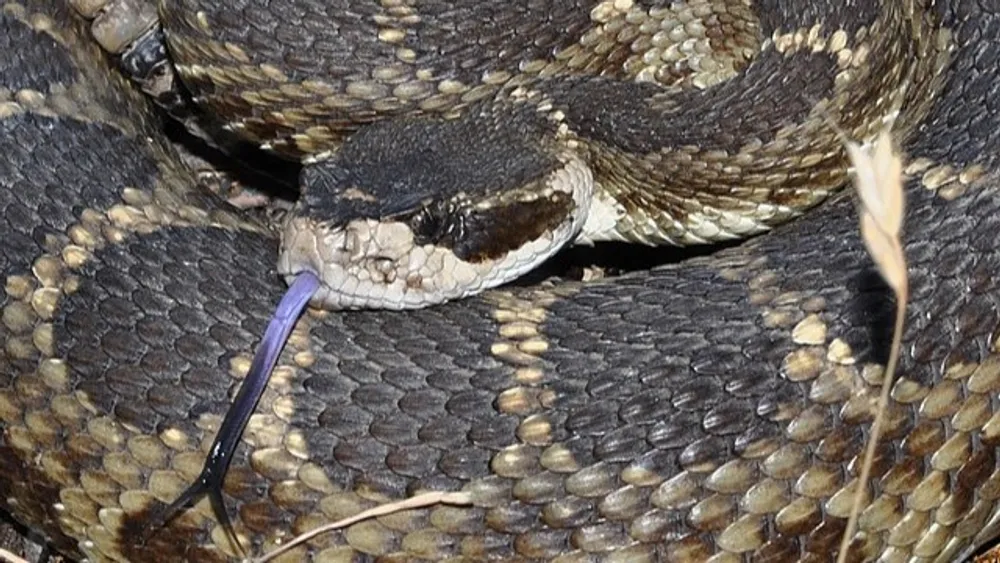
From the arid shrublands of Eastern Washington to the lush forests of the western regions, the Western Rattlesnake has adapted to diverse environments. Unlike its Northern cousin, however, the Western rattler is thought to have enough toxins in its bite to kill a person.
Florida – Eastern diamondback rattlesnake
Florida is home to a diverse array of venomous snakes, numbering six in total: the eastern diamondback rattlesnake, timber rattlesnake, dusky pygmy rattlesnake, coral snake, cottonmouth, and copperhead. Among these, the eastern diamondback rattlesnake takes the title of the state’s deadliest snake.

These venomous serpents, typically between three and six feet in length, can be encountered in various Florida environments, from the wetlands of the Everglades to the wooded regions of the state, underscoring the need for caution and coexistence with these reptilian residents.
Idaho – Western rattlesnake
In Idaho, the western rattlesnake claims the title of the most hazardous serpent in the state. These rattlesnakes, typically between four and six feet long, exhibit a range of colorations, typically light gray, tan, or green, adorned with distinctive dark saddles.

The western rattlesnake is able to adapt to various Idaho landscapes, from arid deserts to mountainous terrains. These reptiles serve as a prominent reminder of the importance of snake awareness and safety when traversing the diverse landscapes of the Gem State.
Maryland – Timber rattlesnake
Maryland is home to the Timber Rattlesnake, the state’s most hazardous venomous serpent. This species’ substantial size, long fangs, and high venom production make it particularly perilous. They can be found in a range of Maryland habitats, from forests to rocky terrain.

the Timber Rattlesnake underscores the necessity of caution and peaceful coexistence while exploring the state’s diverse landscapes as a hiker or a climber. Its presence in these various environments highlights the importance of understanding and respecting the local wildlife, as it plays a crucial role in Maryland’s ecosystem.
Illinois – Massasauga
Illinois is home to the Massasauga rattlesnake, one of its most lethal serpents. The Massasauga, despite its relatively small size, is a venomous rattlesnake that has adapted to thrive in a unique habitat. This snake often utilizes crayfish burrows for shelter and is commonly found in the wet prairies and marshes of the state.
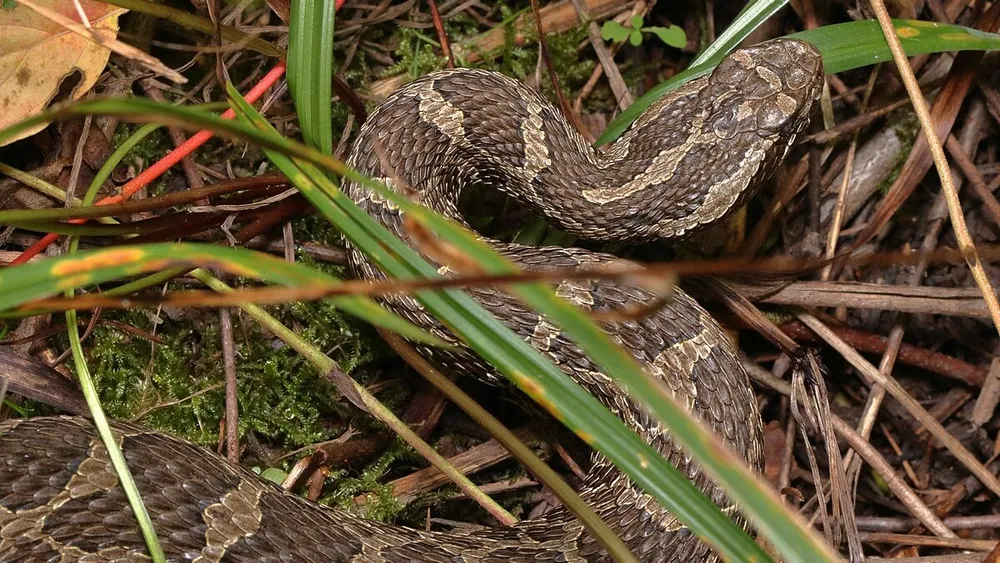
Its preference for these specific environments is crucial for its survival, as it not only provides shelter but also an ample supply of its preferred prey, highlighting the intricate relationships between species and their ecosystems in the diverse landscapes of Illinois.
